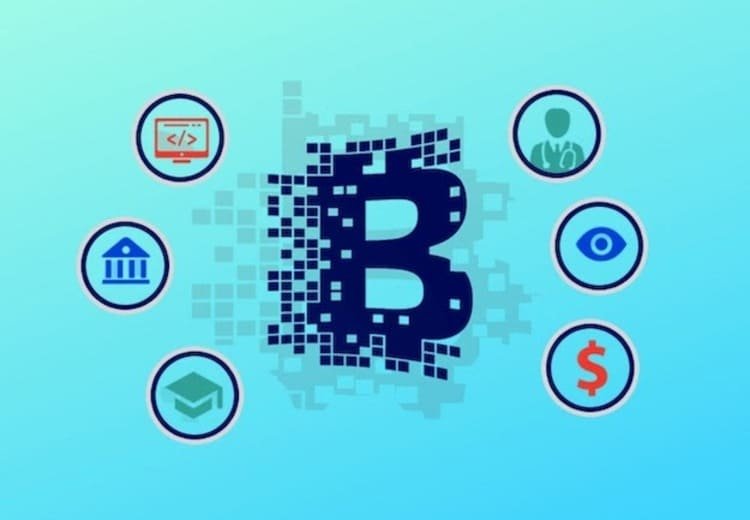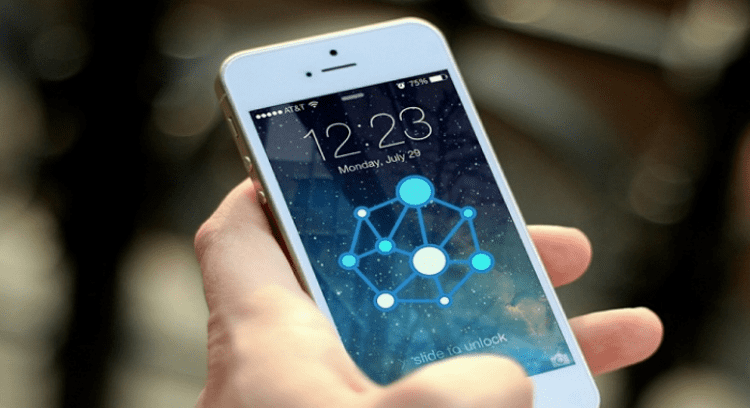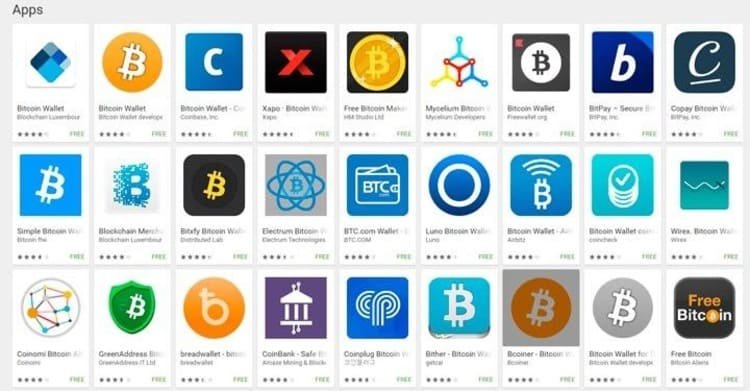How Blockchain Technology Reshapes Mobile App Development

According to IDC, by the end of this year, the spending on blockchain technology is expected to go beyond $9.7 billion from what was only $945 million way back in 2017. A whopping 71% entrepreneurs across all industries consider blockchain as a key technology for their future growth prospects.
With so much to offer, security-savvy mobile apps are very likely to prefer blockchain for their apps than ever before. Blockchain for a mobile app development company brought an array of advantages such as preventing fraudulent transactions, stopping data leaks and data breaches, protecting user data and safeguarding user credentials from being hacked.
In spite of the fact that blockchain has just started to gain traction in the mobile app industry, many development companies are still skeptical about the possibilities. Is this going to be a paradigm shifting technology for app security? Is this the right time to say that Blockchain is reshaping the mobile app development?
Here we are going to discuss the advantages of blockchain technology for mobile apps and the key considerations for incorporating the technology into mobile apps.
Mobile apps using blockchain — Why?

Blockchain comes with an array of awesome features that mobile apps can particularly take advantage of. Let us briefly look at these benefits.
Decentralized network safeguarding data
The biggest benefit of blockchain is data security ensured by distributed networks. It offers a consensus based, peer to peer system allowing user interactions to approve transactions. Instead of relying on the server-client side communication for fulfilling tasks, Blockchain completely does away with the central data repository of the server and ensures complete decentralisation of data for optimum data security.
Blockchain offers impenetrable data security by enforcing robust encryption and distributed keys for unlocking data through a peer-to-peer approval system. This literally makes it impossible for anyone outside a network to penetrate right inside the transaction data of the users. On the other hand, Blockchain by keeping replicas of data through its distributed database systems, offers full proof protection to data from any potential damage or loss.
Immutable structure resulting in great data transparency
Blockchain enforces sequential addition of all the data in distributed blocks of the network and this completely prevents any modification or deletion of the data. Any modification effort with the data is registered as separate data and this literally makes it impossible for anyone to tamper data. Moreover, network manipulation is absolutely impossible here because any instance of data tampering can lead to change in hashtag address allowing further tracking.
In the context of mobile apps, this robust data transparency can really be a game changer. Anyone in the Blockchain network can see the authorised person responsible for any new changes added subsequently to the data. Because of this absolute transparency mobile app developers can now easily validate users, mobile devices, and transactions without needing password protection. The blockchain by using public-key cryptography for digital signature can ensure a more proof validation measure.
Easy mobile tracking of goods and vehicles in transit
Blockchain technology allows mobile apps to track a product or vehicle in transit in real time. This is possible because of the transparent and decentralised data management allowing real time access to data. Whether it is an enterprise app with a supply chain management feature or a fleet management app requiring real time tracking of the vehicles, blockchain distributed ledger systems can really help tracking the shipment or the vehicles based on registered specification data.
Optimum efficiency and performance
The most important thing about blockchain based apps is that for carrying out mobile transactions it doesn't need the help of a third-party gateway platform. Through a peer-to-peer approval system streamlining the entire process, users can complete transactions several times faster.
On the other hand, unlike the server downtime experienced by the so-called traditional transaction processes relying on payment gateways, blockchain makes users experience no downtime.
Introducing blockchain apps or DApps

Blockchain based apps are also called DApps, abbreviated from the term decentralized applications. The term perfectly expresses the core value proposition of the blockchain technology as these apps don't require servers to facilitate exchange of information whether to carry out transactions or for messaging or for any other interactions. The blockchain network works both as dispersed servers and users at the same time.
How blockchain technology works?
To understand how blockchain apps work, there should be a clear understanding of how blockchain technology really works. The data shared by blockchain among the peers is stored in a lot of decentralised blocks. Any addition or alteration in any of the blocks is shared by everyone in that network. Any data added to any of this chain of blocks cannot be changed or deleted.
Now, there are basically two different types of blockchain networks out there.
- The permissionless blockchain refers to the network of blocks that remain equally accessible to all network participants and members. It allows every user accessing the code, validating transactions, allowing interactions while remaining completely anonymous. The cryptocurrency Bitcoin is a great example of this permissionless blockchain network.
- The other type of blockchain network is the permissioned blockchain. It requires permission or authorisation of users for participating in the network. In this type of network all users have specific roles and permissions. This type of Blockchain is run by regulations for carrying out transactions and data exchanges among authorised network members.
How To Incorporate Blockchain Into Your Next Mobile Application?

Now that you have understood the value propositions of Blockchain technology in the context of mobile apps and how the technology actually works, let us explain here how Blockchain can be incorporated into the mobile app development process.
Know the type of apps suitable for blockchain
Blockchain is a database technology that may not suit every type of app. An app not requiring any transaction feature does not need blockchain. Particularly apps where transactions play a key role or apps dealing with critical databases, need blockchain technology.
Let's have a look at some of the most common types of apps that can be benefited by blockchain technology.
- E-wallet or mobile wallet apps can allow smooth transactions by using blockchain technology.
- Retail or e-commerce apps allowing payments through blockchain based cryptocurrencies automatically uses the technology.
- Apps for digital asset tracking and supply chain management can allow real time monitoring of asset or goods movement through blockchain.
- Enterprise apps dealing with mission-critical business data that needs the strongest protection from data breaching and hacking attempts can use the blockchain database.
Based upon the nature of your app and features you need to choose between Permissionless Blockchain and Permissioned Blockchain. The first is suitable for wallet and retail transaction apps, while the second is good for enterprise apps and asset tracking apps.
Deciding the technology stack
Now you need to decide on the frontend, backend, middleware and database technologies for your blockchain app. The knowledge of common and elementary programming languages for fintech niches is required. Some of the language skills you should ensure include Java, C++, Python and JavaScript. It is also expected that the developers have programming skills with two blockchain specific languages such as Solidity and Simplicity.
Blockchain implementation
First of all, you need to choose the right development methodology. Mutual consensus mechanism is said to be most effective to ensure optimum accessibility and data security. As for design architecture or the design model you can choose among cloud-based, hybrid, or in-house models. Make sure the chosen design architecture perfectly meets the target platform OS requirements.
The last step is to create an admin interface or admin panel. This is where the frontend technology along with app servers and chosen database plays the most important role.
Embrace MVP approach
For your Blockchain app project, it is advisable to embrace MVP (Minimum Viable Product) approach allowing you to develop a basic app with elementary features and further making value additions through subsequent app updates. Besides reducing initial app development cost, this will help you build a perfect app over time through changes and additions validated by user feedback.
Conclusion
Blockchain based decentralised apps ensure optimum data security besides streamlining data access with real time features. The technology offers ahead of time value propositions for mobile apps. But implementation of the technology is what matters most for a successful blockchain powered app.
---------------------------------------------------------------------------------------------
About the Author
Dhaval Sarvaiya is one of the founders of Intelivita, one of the leading mobile app development companies with offices in Canada and USA. I help Startups and Enterprises overcome their digital transformation and mobility challenges with the might of on-demand solutions powered by cutting-edge technology. Connect with Dhaval at Twitter, Linkedin, Facebook.